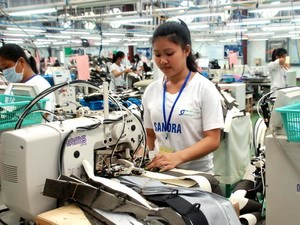Laos will enjoy a boost in economic growth until 2052 as the working age of its young labour force continues to further expand economic development, according to the National Transfer Accounts (NTA) project.
NTA was launched by the United Nations Population Fund and the United Nations Development Programme in Vientiane on Friday to show Laos a new way to look at population change and economic growth and to draw policy implications.
NTA analysis can help policymakers to take full advantage of their demographic transition by revealing a new dimension of the Lao economy from the aspect of demographic window of opportunity.
United Nations population projections indicate that the proportion of the Lao population of working age (15-64) will continue to expand from 61.8 percent in 2015 to 62.4 in 2020 and 65.9 percent in 2030.
The country will experience a profound population transition, benefiting economic development with a large young labour force until the 2050s and then reaching the stage of ageing population.
Presently, Laos is at the beginning state of the transition, with 57 percent of its population currently under 25 years of age.
However, the economic benefit is not automatic; NTA requires the Lao government to implement a sound human-capital development policy based on investment in the education and health of children and young people so that the future labour force will be productive for sustainable economic development.
In Laos, the proportion of effective workers in the population is less than half at about 41.2 percent. This is partly because the income of young workers tends to be low, possibly reflecting a low level of skills and capacity, so it is essential to enhance productivity through education and training.
Lao people are still highly dependent on agriculture, which accounts for about 72 percent of total working hours. But agriculture tends to be seasonal, so many in the labour force are underutilises.
Raising productivity through a shift in the economic structure towards more productive sectors is crucial. The approach should be two-pronged, such as raising productivity in the agriculture sector and fostering a growing, employment-generating non-farm sector, which can absorb workers released from agriculture.
Source: Vientiane Times



